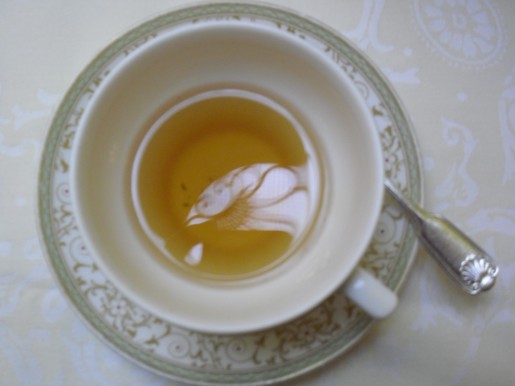British Tea Drinking Explained

There are two types of tea ceremony in Britain, the Afternoon Tea and the Cuppa. Both have their separate purposes and merits.
Afternoon Tea
Afternoon Tea is a social event governed by etiquette and accompanied by light sandwiches and cakes. The sandwiches are served without crusts. You do not lift your pinkie finger and you NEVER dunk anything into your tea. Tea is poured in the cup first, then milk. Historically, this allowed the hostess to show off the quality of her bone china (quality china didn’t crack with heat) and allows the milk to be added to suit the drinker’s taste. If you prefer lemon to milk, use slices not wedges. Never try to combine the two as the milk will curdle.
The Duchess of Bedford, a lady in waiting to Queen Victoria, was the first to turn Afternoon Tea into a social occasion to fill the gap between lunch and dinner when dinner was served as late as 8 pm in the upper classes. This early meal was adopted by the masses as ‘tea’ and now the word simply means the evening meal in many parts of Britain. ‘What would you like for tea,’ means simply ‘what would you like to eat this evening. ‘Supper’ is a lighter snack later in the evening in some parts of the country.
Afternoon Tea is now chiefly an event for tourists (British as well as foreign) and women on shopping excursions, and can be found at small tea and coffee houses as well as the big department stores and lavish hotels such as Langhams (where Afternoon Tea was first served at a hotel in 1865).
The Cuppa
The Cuppa is the humble cup or mug of tea served at any time across Britain.
It starts at the beginning of the day, the first person in the kitchen boils the kettle and says to the next person ‘want a cuppa?’ Tea drinking continues at work. An office worker pushes their chair back from their desk and walks over to the break area, pausing at a colleague’s desk to ask ‘tea?’ then boils the kettle and makes several cups of tea for their colleagues. In a culture with a high work ethic, tea is a sanctioned pause. One is allowed to stop work for a moment if one is making a cup of tea. Some employers may expect the tea to be drunk at the desk, but few if any will complain about the trip to the break area to boil a kettle, especially if tea is offered to others as well.
Offering tea is considered polite and people have come to expect the offer. The plumber is offered a cup of tea by the homeowner before he or she begins work. After the evening meal (tea, if you remember) the family sit down in front of the TV and someone says ‘I’ll be there in a minute, does anyone want a cup of tea?’ One of the first things a host says when someone stops by their house is ‘cup of tea?’ The only exception to this is if they don’t want the person to stay, if the host is not British, or if the guest is arriving for a dinner or party. Teas and coffees will be offered at the end of a dinner or party.
British tea drinking is so predictable that during the half time at major football games the National Grid (deliver electricity and gas to all the households and businesses in Britain) knows to expect a sudden surge of usage as everyone goes into the kitchen to put the kettle on for a cup of tea.
The Cuppa is a comfort as well. If someone gets bad news, someone else knows to put the kettle on and make a cup of tea. When all the world is going crazy at least there is the reliable Cuppa. The moment of pausing to make the tea, the enforced comma in the busy routine, is calming for both the tea maker and tea drinker.
While the Cuppa ritual is not laced with cautious etiquette of Afternoon Tea, the act of putting the kettle on, popping a tea bag in a mug or tea pot, pouring in the hot water and waiting for the tea to brew, pouring out the cups, and finally sitting or standing with mug in hand is as much a part of everyday British life as breathing.
Humans are comforted by ritual, but it is not just the ritual but the ingredients in tea that helps us to feel calmer and more prepared to return to the action-whether it’s back to the desk, building work, more errands or the grim task of dealing with bad news. Tea contains caffeine, which helps wake us up a bit if we’re slowing down, but it also contains an amino acid called theanine which works with the caffeine to allow us to be alert without the stress.

Great cultural hindsight. It’s so great to learn about the origins of something that seems so fashionable to do these days. Amazing to learn that it was adopted in the upper classes as a break between meals. Interesting to note that many cultures have their ‘breaks’ in between meals. Seems like a healthier way to eat and an enjoyable past time with friends.